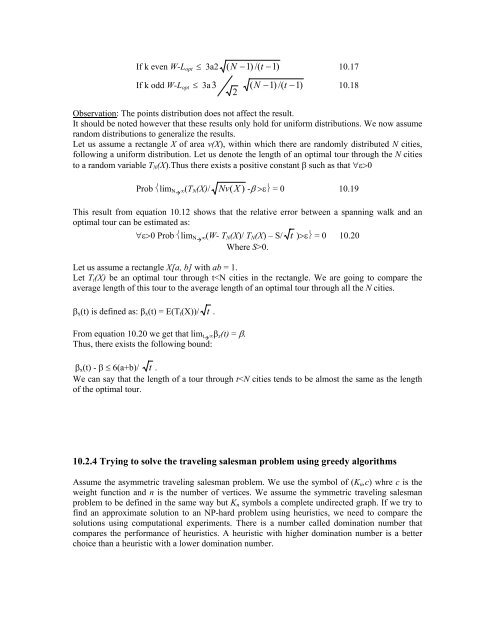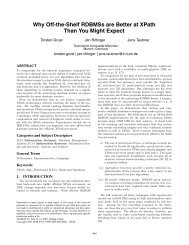Chapter 10 The Traveling Salesman Problem
Chapter 10 The Traveling Salesman Problem
Chapter 10 The Traveling Salesman Problem
You also want an ePaper? Increase the reach of your titles
YUMPU automatically turns print PDFs into web optimized ePapers that Google loves.
If k even W-Lopt ≤ 3a2 ( N −1) /( t −1)<br />
<strong>10</strong>.17<br />
If k odd W-Lopt ≤ 3a3<br />
( N −1) /( t −1)<br />
<strong>10</strong>.18<br />
2<br />
Observation: <strong>The</strong> points distribution does not affect the result.<br />
It should be noted however that these results only hold for uniform distributions. We now assume<br />
random distributions to generalize the results.<br />
Let us assume a rectangle X of area v(X), within which there are randomly distributed N cities,<br />
following a uniform distribution. Let us denote the length of an optimal tour through the N cities<br />
to a random variable TN(X).Thus there exists a positive constant β such as that ∀ε>0<br />
Prob ⎨limN�∞(TN(X)/ Nv(X ) -β >ε⎬ = 0 <strong>10</strong>.19<br />
This result from equation <strong>10</strong>.12 shows that the relative error between a spanning walk and an<br />
optimal tour can be estimated as:<br />
∀ε>0 Prob ⎨limN � ∞(W- TN(X)/ TN(X) – S/ t )>ε⎬ = 0 <strong>10</strong>.20<br />
Where S>0.<br />
Let us assume a rectangle X[a, b] with ab = 1.<br />
Let Tt(X) be an optimal tour through t






